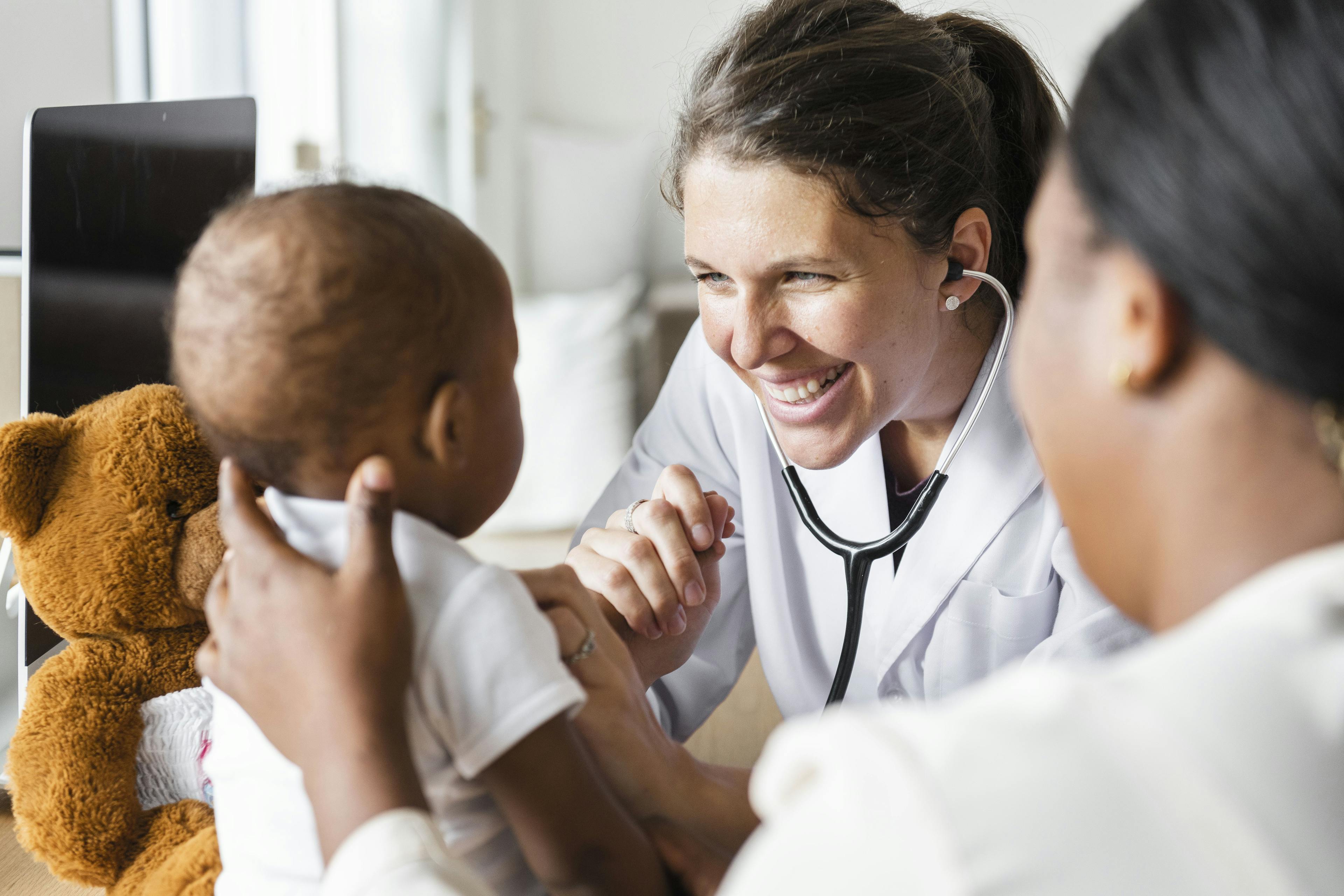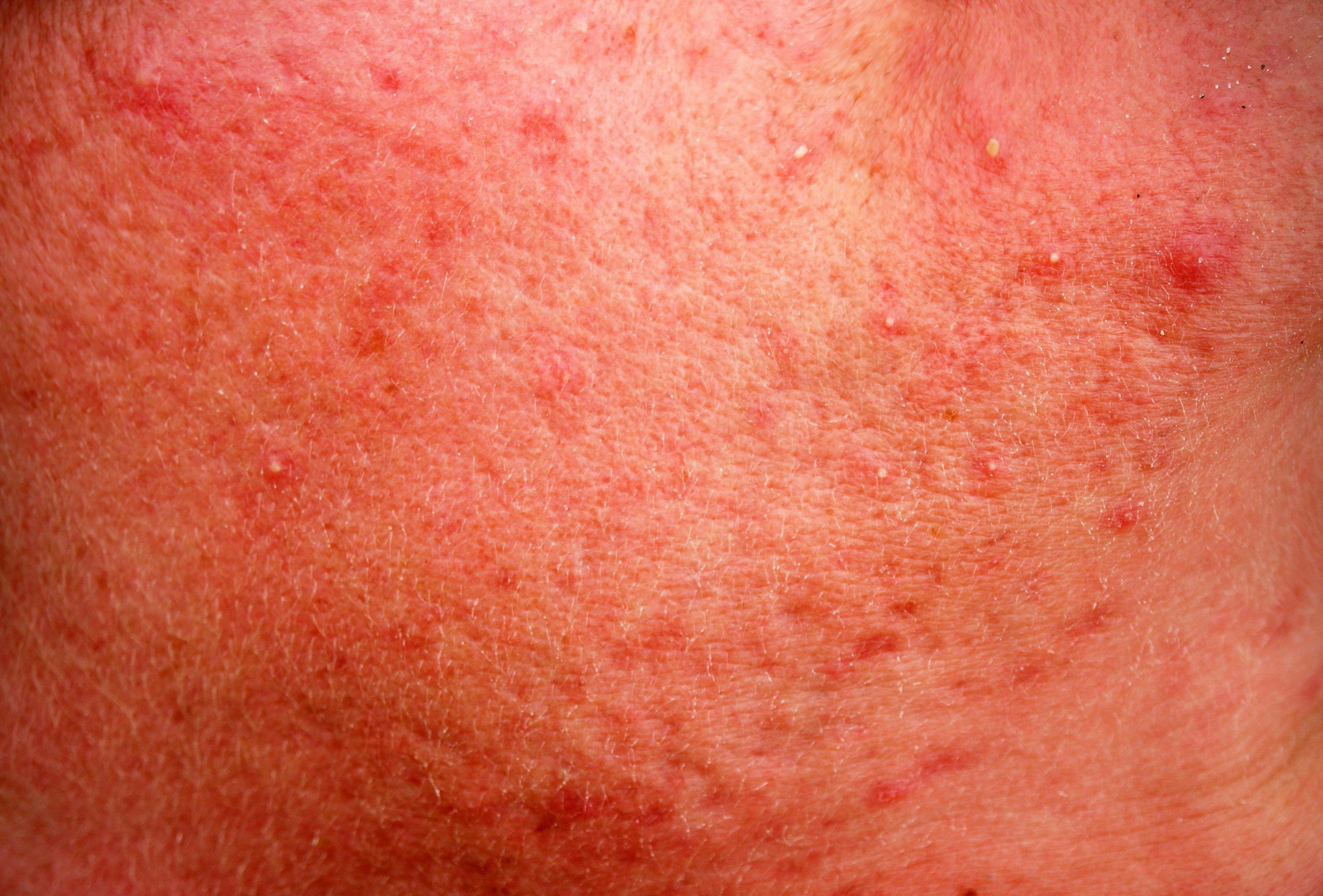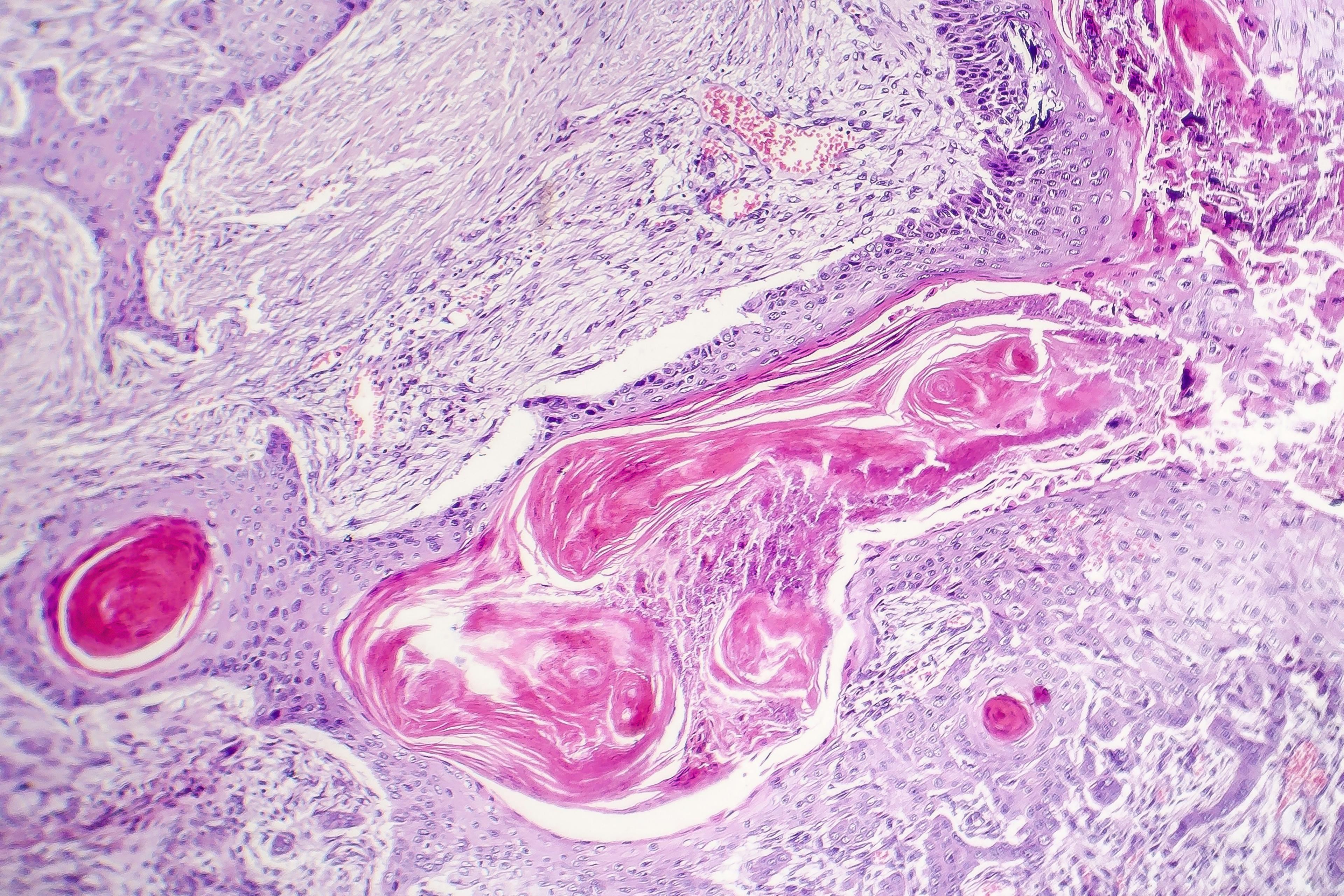- Acne
- Actinic Keratosis
- Aesthetics
- Alopecia
- Atopic Dermatitis
- Buy-and-Bill
- COVID-19
- Case-Based Roundtable
- Chronic Hand Eczema
- Drug Watch
- Eczema
- General Dermatology
- Hidradenitis Suppurativa
- Melasma
- NP and PA
- Pediatric Dermatology
- Pigmentary Disorders
- Practice Management
- Precision Medicine and Biologics
- Prurigo Nodularis
- Psoriasis
- Psoriatic Arthritis
- Rare Disease
- Rosacea
- Skin Cancer
- Vitiligo
- Wound Care
Publication
Article
Dermatology Times
Adjunctive examined for facial erythema
Author(s):
Investigators assessed results combining oxymetazoline and four different lasers in a recent phase 4 study. Results demonstrate improvement from baseline in Clinician Erythema Assessment (CEA) score.
Treatment with oxymetazoline (RHOFADE, EPI Health) as adjunctive therapy with energy-based therapy may offer a safe and well-tolerated option for reducing facial erythema in patients with moderate-to-severe persistent facial erythema associated with rosacea.
A recent phase 4, open-label, interventional study1 evaluated the safety and tolerability of oxymetazoline hydrochloride cream 1% (oxymetazoline) when used alongside energy-based therapies such as lasers and intense pulsed light (IPL). Efficacy assessments were exploratory.
“These therapies can effectively manage vascular signs of the disease, such as telangiectasia and persistent erythema, by selectively targeting and thermally damaging dysregulated blood vessels. However, not all patients respond to energy-based therapies,” says Emil Tanghetti, M.D., Center for Dermatology and Laser Surgery, Sacramento, California, lead author on the study.
He adds that some patients may require more than one treatment, which could add “substantial” costs. Energy-based therapies may result in adverse side effects including unwanted purpura or erythema 2-4. They also have limited efficacy in reducing diffuse erythema associated with acne rosacea due to the small caliber of vessels, which are more difficult to target, according to the study.
“A combination approach to treatment including both pharmacological and physical approaches may allow more effective management of the vascular manifestations of rosacea than utilization of any one treatment modality as monotherapy,” says Tanghetti.
Oxymetazoline hydrochloride cream, an -1Aadrenoceptor agonist, already has U.S. Food and Drug Administration (FDA) approval for the topical treatment of persistent facial erythema associated with rosacea in adults5. Phase 3 clinical trials (Randomized EValuation of the Effects of Anacetrapib Through Lipid-modification (REVEAL), which evaluated data at 29 days6-7 and one year8, showed a single daily application of oxymetazoline to be well tolerated. safe and effective in the treatment of moderate to severe persistent facial erythema of rosacea.
For the current study, eligible patients with moderate-to-severe facial erythema associated with rosacea received one of four energy-based therapies on day one and day 29: Excel V (Cutera, Brisbane, CA) potassium titanyl phosphate (KTP) laser; Palomar Icon (Cynosure, Westford, MA) IPL therapy; the pulsed-dye laser Vbeam Perfecta (Syneron-Candela, Mississauga, Ontario, Canada; PDL-Vbeam); or the pulsed-dye laser Cynergy (Cynosure; PDLCynergy). A total of 46 patients (mean age, 51.1 years; 78.3% female) enrolled in this study. Similar numbers of patients received each of the energy-based therapies in addition to oxymetazoline, according to Tanghetti.
Each study center was assigned a specific device to utilize during the study based on the current expertise and other devices already in place. The investigator’s current standard of practice determined the protocol followed for each laser treatment. Rather than using randomization or stratification, patients were assigned to an energy-based therapy based on their study site.
Patients in the study received a once-daily application of oxymetazoline beginning on day three and continuing through day 27. Following instructions from study staff and an instructional video, participants applied a pea-sized amount of oxymetazoline topically to the face at approximately the same time day. However, on study visit days, they applied the cream after completing predose study assessments and procedures. They underwent a washout of oxymetazoline on day 28 before receiving energy-based therapy the following day.
Daily application of oxymetazoline was re-initiated on day 31 and continued until study end on day 56. Investigators asked patients who discontinued the study to return on the last study visit day for end-of-study data assessment.
Tanghetti and his fellow investigators evaluated improvement from baseline in Clinician Erythema Assessment (CEA) score, patient satisfaction measures, incidence of treatment- emergent adverse events (TEAEs), and worsening from baseline on dermal tolerability assessments and the Clinician Telangiectasia Assessment (CTA).
All patients demonstrated an improvement from baseline in CEA during the study.
Among all 44 evaluable patients on day one, 6 (13.6%) showed at least one-grade improvement in CEA one hour after energy-based therapy. On day three, investigators observed one-grade or greater improvement in 20 (45.5%) patients before application of oxymetazoline, and by 35 (79.5%) patients at six hours post-treatment. On day 31, 26 (60.5%) of 43 evaluable patients, demonstrated one-grade or greater improvement before application of oxymetazoline, and by 38 (88.4%) patients at six hours post-treatment.
Data shows 39 of 43 evaluable patients (90.7%) demonstrated an improvement six hours post-treatment on day 56. Most patients were satisfied or very satisfied with treatment at the end of the study, say the investigators.
In terms of adverse effects, some patients experienced worsening in dermal tolerability assessment symptoms (range: 4–21 patients; 8.7–45.7%). Worsening in CEA and CTA were each reported by three patients (6.5%) at any time during the study.
No serious, severe, or fatal TEAEs were reported.
Disclosure:
Emil A. Tanghetti: is an investigator for Allergan and a consultant for Aclaris, Galderma, Cynosure/Hologic and Accure; David J. Goldberg: is an investigator for Allergan and has received honoraria as a speaker for Allergan; Jeffrey S. Dover: is an investigator for Allergan and has received consulting honoraria from Allergan; Roy G. Geronemus: is an investigator for Allergan, ArchiMedus, Avava, Candela, Cynosure, Cytrellis, Endo Pharmaceuticals, Galderma, Kerastem, Lutronic, Merz, New York Stem Cell Foundation, Pulse Biosystem, Revance, Sciton, and Sienna Biopharmaceuticals; is on the medical advisory board for Allergan, Candela, Cearna, Cynosure, Cytrellis, Lutronics, and Soliton; and owns stock in Cytrellis; Zane Bai: has nothing to disclose; Nancy Alvandi: was an employee of Allergan at the time of this study; Stuart D. Shanler: was an employee of Aclaris Therapeutics,Inc. at the time of this study and owns stock/stock options in that company; has received royalties from the sale of RHOFADE from Allergan/Actavis and from Aclaris, and now receives royalties from EPI Health; has a patent 7,821,049 with royalties paid, a patent8,114,898 licensed, a patent 8,420,688 with royalties paid, a patent8,673,953 licensed, a patent 8,815,929 with royalties paid, a patent8,877,793 with royalties paid, a patent 9,265,761 licensed, and a patent/Additional Unpublished Applications licensed.
References:
1. Gether L, Overgaard LK, Egeberg A, Thyssen JP. Incidence and prevalence of rosacea: A systematic review and meta analysis.Br J Dermatol 2018;179(2):282–289.
2. Tanghetti E, Del Rosso JQ, Thiboutot D, et al. Consensusre commendations from the American Acne & Rosacea Society on the management of rosacea, part 4: A status report on physical modalities and devices. Cutis 2014;93(2):71–76.
3. Hofmann MA, Kokolakis G. A case report of combination treatment with potassium‐titanyl phosphate laser and brimonidine topical gel in erythema to telangiectatic rosacea.J Cosmet Laser Ther 2017;19(4):222–224.
4. Shanler SD, Ondo AL. Successful treatment of the erythema and flushing of rosacea using a topically applied selective alpha1‐adrenergic receptor agonist, oxymetazoline. Arch Dermatol 2007;143(11):1369–1371.
5. Rhofade [package insert]. Charleston, SC: EPI Health; 2019.
6. Kircik LH, DuBois J, Draelos ZD, et al. Pivotal trial of the efficacy and safety of oxymetazoline cream 1.0% for the treatment of persistent facial erythema associated with rosacea:Findings from the first REVEAL trial. J Drugs Dermatol 2018;17(1):97–105.
7. Baumann L, Goldberg DJ, Stein‐Gold L, et al. Pivotal trial of the efficacy and safety of oxymetazoline cream 1.0% for the treatment of persistent facial erythema associated with rosacea:Findings from the second REVEAL trial. J Drugs Dermatol 2018;17(3):611–619.
8. Draelos ZD, Gold MH, Weiss RA, et al. Efficacy and safety of oxymetazoline cream 1.0% for treatment of persistent facia lerythema associated with rosacea:Findings from the 52‐week open label REVEAL trial. J Am Acad Dermatol 2018;78(6):1156–1163

Newsletter
Like what you’re reading? Subscribe to Dermatology Times for weekly updates on therapies, innovations, and real-world practice tips.



























